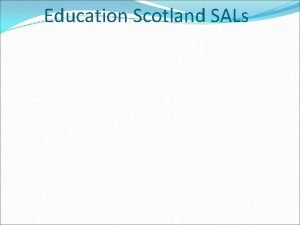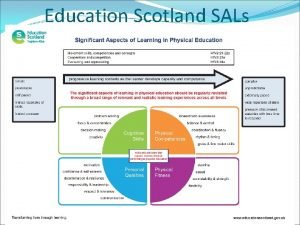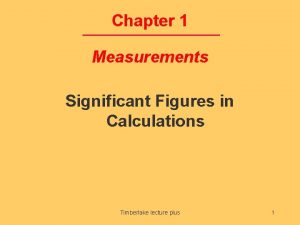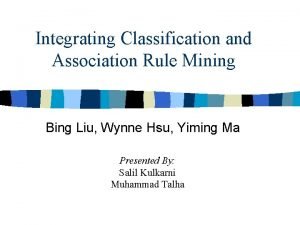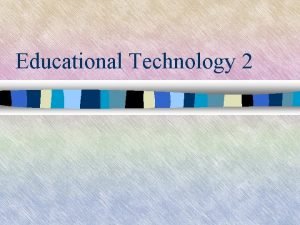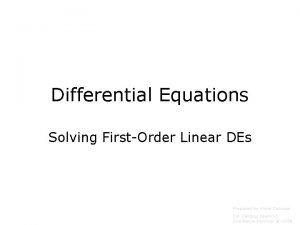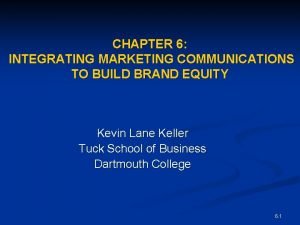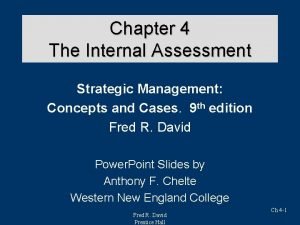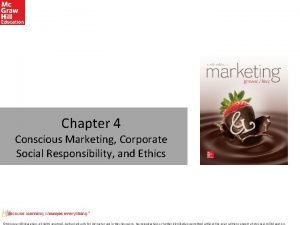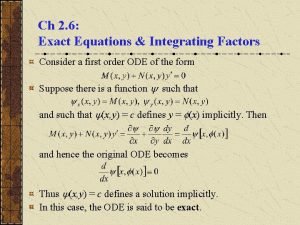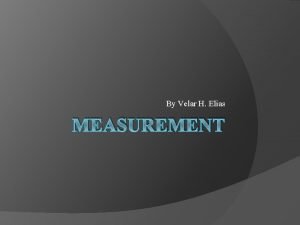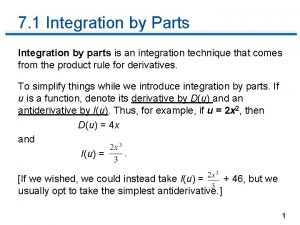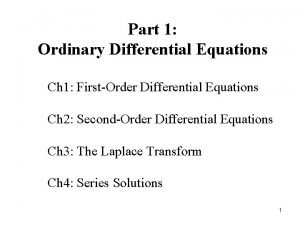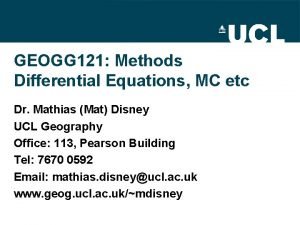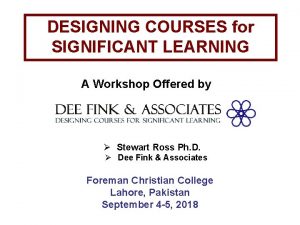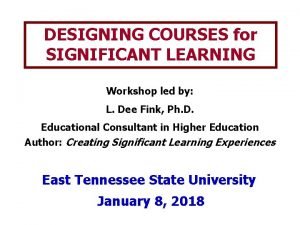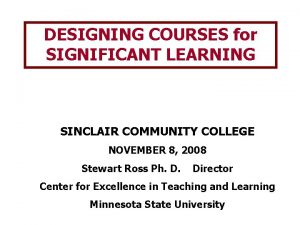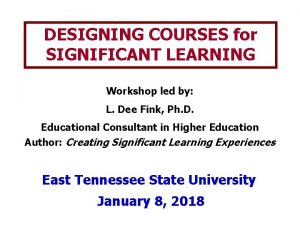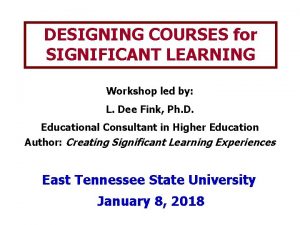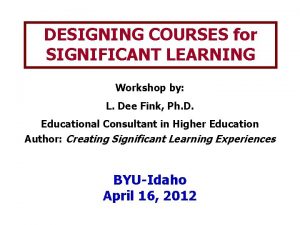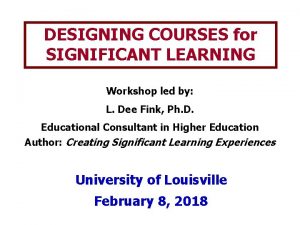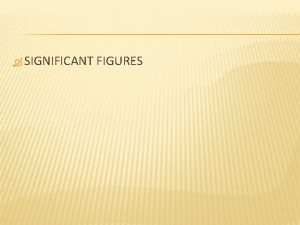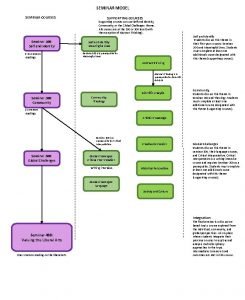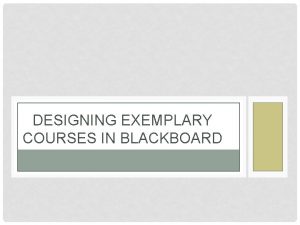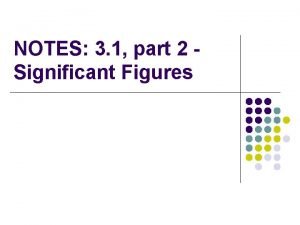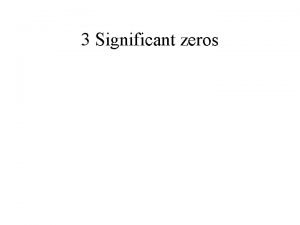Integrating Dr Finks Designing Courses for Significant Learning


























- Slides: 26

Integrating Dr. Fink’s “Designing Courses for Significant Learning” into Creating Online QM Courses Robin O'Callaghan Senior Instructional Designer, QM Peer Reviewer & QM F 2 F Facilitator Dr. Ken Graetz WSU TLT Director A community of learners improving our world

www. winona. edu Workshop Learning Objectives 1. Summarize the importance of taxonomy integration into their online course 2. Identify reasons why using different taxonomies with QM standards can be effective with course design 3. Compare and contrast Fink’s Instructional Design Model and QM 4. Identify instructional design tools that align with QM 5. Discuss the importance of using taxonomies with QM

www. winona. edu Designing Courses for Significant Learning Dr. Fink 1. Initial Design Phase A. Situational Factors B. Learning Objectives C. Feedback and Assessment D. Teaching and Learning Activities E. Integration 2. Intermediate Phase A. Course Structure B. Instructional Strategies C. Learning Activities 3. Final Design Phase A. Grading System B. Possible Problems C. Syllabus Source: Dr. Dee Fink-A Self-Directed Guide to D. Evaluation Designing Courses for Significant Learning

www. winona. edu Designing Courses for Significant Learning Dr. Fink 1. Initial Design Phase A. Situational Factors B. Learning Objectives C. Feedback and Assessment D. Teaching and Learning Activities E. Integration 2. Intermediate Phase A. Course Structure B. Instructional Strategies C. Learning Activities 3. Final Design Phase A. Grading System B. Possible Problems C. Syllabus Source: Dr. Dee Fink-A Self-Directed Guide to D. Evaluation Designing Courses for Significant Learning

www. winona. edu Fink-Step 2: Learning Objectives • Fink Taxonomy chart to draft learning objectives that are appropriate for the course level and module level. • What do you want the students to learn or retain 2 -3 years from now? • How do you want your students to stand out from others taking a similar course? • More emphasis on critical thinking skills, application of knowledge and solving world problems. Source: Dr. Dee Fink-A Self-Directed Guide to Designing Courses for Significant Learning

Bloom’s Taxonomy

Fink’s Taxonomy Source: Dr. Dee Fink-A Self-Directed Guide to Designing Courses for Significant Learning

Fink Bloom

www. winona. edu QM Standard 2 Learning Objectives 2. 1 The course learning objectives describe outcomes that are measurable. 2. 2 The module/unit learning objectives describe outcomes that are measurable and consistent with the course-level objectives. Copyright Maryland. Online 2013

www. winona. edu Video Insert

Backward Course Design Learning Objectives • Identify desired results Assessment • Determine evidence Learning Activities • Plan learning experiences & activities

www. winona. edu Fink-Step 3: Feedback & Assessment Procedure • What will students be able to demonstrate based on your learning objectives? Projects, papers, quizzes, discussions. • Working backwards (starting with assessment) can help you align Learning Objectives with Assessments. • Feedback should be immediate frequent and make sure it’s clear as to the different between acceptable and unacceptable work. Source: Dr. Dee Fink-A Self-Directed Guide to Designing Courses for Significant Learning

www. winona. edu Fink-Step 3: Feedback & Assessment Procedure • Educative Assessments-Set of feedback and assessment. • Forward Thinking Assessment-questions or real-world problems. • Criteria and standards for evaluating student work. • Self-Assessment-students reflect on their own work or projects. Source: Dr. Dee Fink-A Self-Directed Guide to Designing Courses for Significant Learning

www. winona. edu QM Standard 3 Assessment and Feedback 3. 1 The types of assessments selected measure the stated learning objectives and are consistent with course activities and resources. 3. 3 Specific and descriptive criteria are provided for the evaluation of students’ work and participation and are tied to the course grading policy. 3. 4 The assessment instruments selected are sequenced, varied, and appropriate to the student work being assessed. 3. 5 Students have multiple opportunities to measure their own learning progress. Copyright Maryland. Online 2013

www. winona. edu Video Insert

www. winona. edu Step 5: Integration • Make sure all your components are aligned in Steps 1 -4. • Key components in Steps 1 -4 should be closely related and support each other. • Course Matrix or Course List: List your learning objectives, identify the assessment tool that aligns with the learning objective. • Next align the learning activities with the assessment tools. Source: Dr. Dee Fink-A Self-Directed Guide to Designing Courses for Significant Learning

www. winona. edu Key components must align Eight General Standards: 1. 2. 3. 4. 5. 6. 7. 8. Course Overview and Introduction Learning Objectives (Competencies) Assessment and Measurement Resources and Materials Learner Engagement Course Technology Learner Support Accessibility Alignment: Critical course elements work together to ensure that students achieve the desired learning outcomes. Copyright Maryland. Online 2013

www. winona. edu Bite from Pat Insert text here

www. winona. edu Intermediate Phase Fink-Step 6: Course Structure • 4 -7 segments that focus on themes, concepts, topics or issues • Arrange these segments into a logical sequence and decide how many weeks each segment will need. • Each new segment: • Introduction • Opportunity to apply and use what they are learning-practice • Assessment with final application • As more content is delivered to your students the more complex the assignments can become. Source: Dr. Dee Fink-A Self-Directed Guide to Designing Courses for Significant Learning

Structured Sequence for Course Content Source: Dr. Dee Fink-A Self-Directed Guide to Designing Courses for Significant Learning

www. winona. edu Bite from Pat

We. Teach Tracks One www. winona. edu 1. 2. 3. 4. Charting your course Quality Matters Overview Find, Buy, Build and Share Online Content Communicating and collaborating with your online students 5. Online Assessment & Feedback 6. Connecting your students to online resources at WSU 7. Creating a timeline for your online course

www. winona. edu We. Teach Tracks Two 1. Initial Design Phase A. Situational Factors B. Learning Objectives C. Feedback and Assessment D. Teaching and Learning Activities E. Integration 2. Intermediate Phase A. Course Structure B. Instructional Strategies C. Learning Activities 3. Final Design Phase A. Grading System B. Possible Problems C. Syllabus D. Evaluation Source: Dr. Dee Fink-A Self-Directed Guide to Designing Courses for Significant Learning

www. winona. edu We. Teach Tracks Three • Internal Review of your course • Report on each standard-met or not met • Detailed report of how you might improve the “not-met” standards • Create an action plan to meet any QM standards you have not met • Work 1: 1 with Instructional Designer • External Review (TLT funding)

www. winona. edu Workshop Learning Objectives 1. Summarize the importance of taxonomy integration into their online course 2. Identify reasons why using different taxonomies with QM standards can be effective with course design 3. Compare and contrast Fink’s Instructional Design Model and QM 4. Identify instructional design tools that align with QM 5. Discuss the importance of using taxonomies with QM

www. winona. edu
 Newcastle city learning centre
Newcastle city learning centre Anatoli chitov
Anatoli chitov Cuadro comparativo de e-learning
Cuadro comparativo de e-learning Designing spaces for effective learning
Designing spaces for effective learning Designing constructivist learning environments
Designing constructivist learning environments Machine learning system design examples
Machine learning system design examples Significant aspects of learning
Significant aspects of learning Sals pe scotland
Sals pe scotland Learning significant figures
Learning significant figures Indirect quotation
Indirect quotation Integrating quotes mla
Integrating quotes mla Pellucidum
Pellucidum Integrating factor method
Integrating factor method Integrating classification and association rule mining
Integrating classification and association rule mining Bluestar plm
Bluestar plm Middle level integration
Middle level integration Intergrating factor
Intergrating factor Integrating marketing communication to build brand equity
Integrating marketing communication to build brand equity Key internal forces
Key internal forces Understanding how csr differs from conscious marketing
Understanding how csr differs from conscious marketing Non exact differential equation solver
Non exact differential equation solver Integrating type dvm
Integrating type dvm Integration by parts example
Integration by parts example How many stages does coming together process have?
How many stages does coming together process have? Integrating factor
Integrating factor Integrating quotes
Integrating quotes Seperation of variables
Seperation of variables






